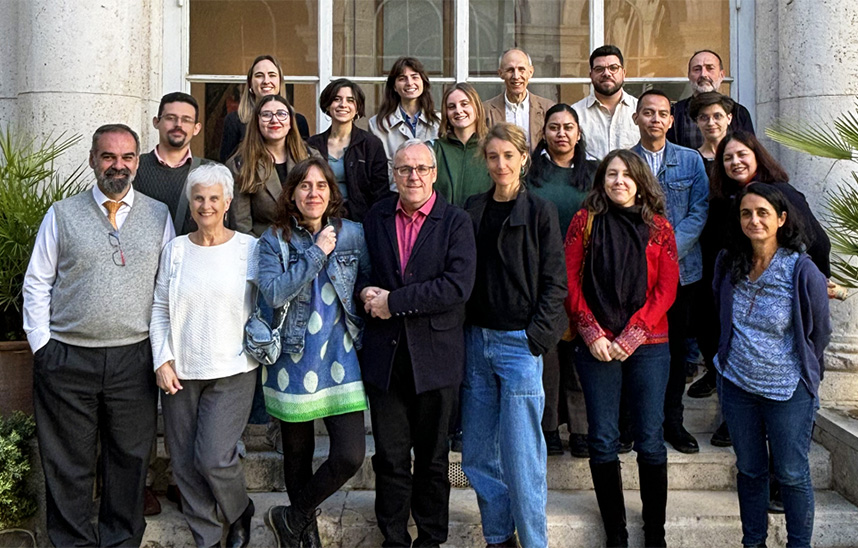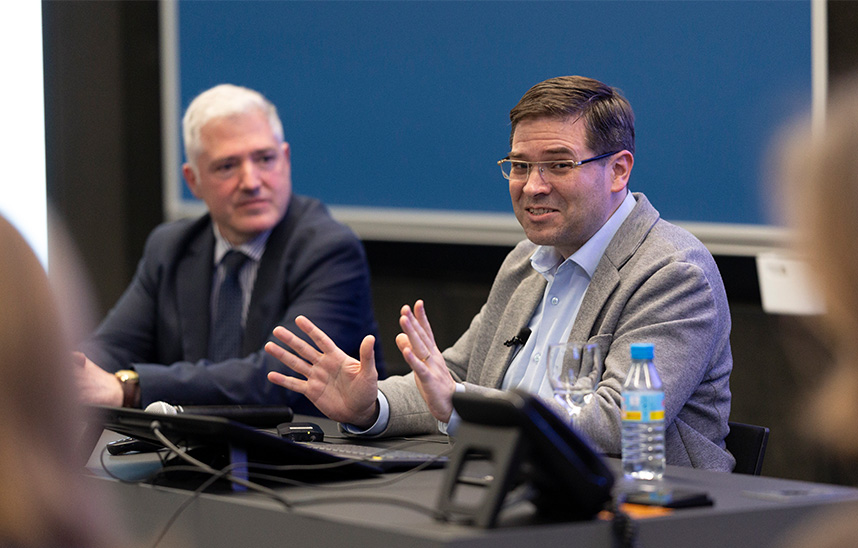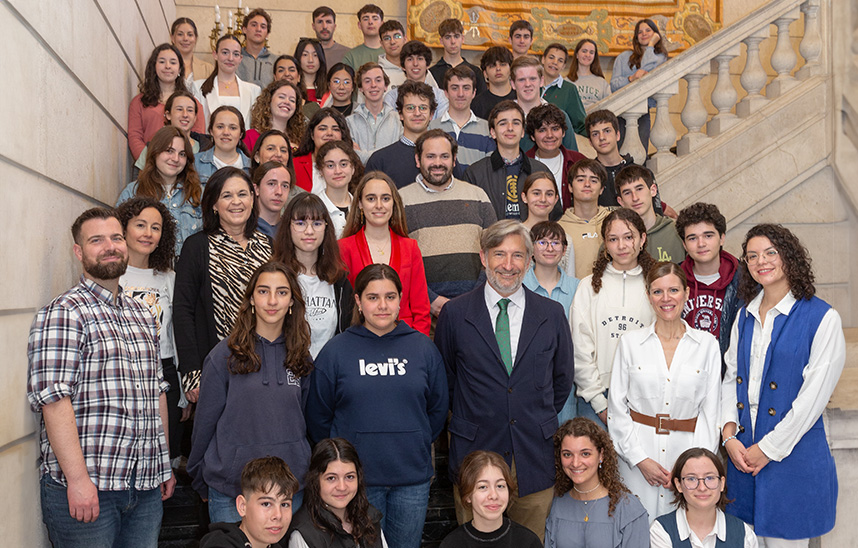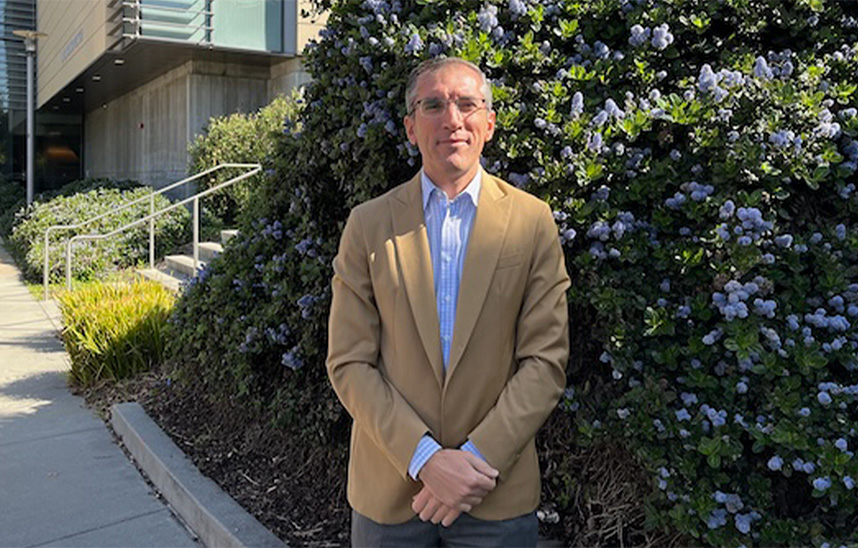noticia_FYL_2021_02_24_ciclo_el_prado_fernando_marias
"El abanico de Velázquez: imitación y retrato, ilusión y desengaño", third session of lecture series of the Museo del Prado at the University of Navarre
The Full Professor Fernando Marías, from the Universidad Autónoma de Madrid, has approached to the assistants the "naturalism" that characterized the artist's painting.
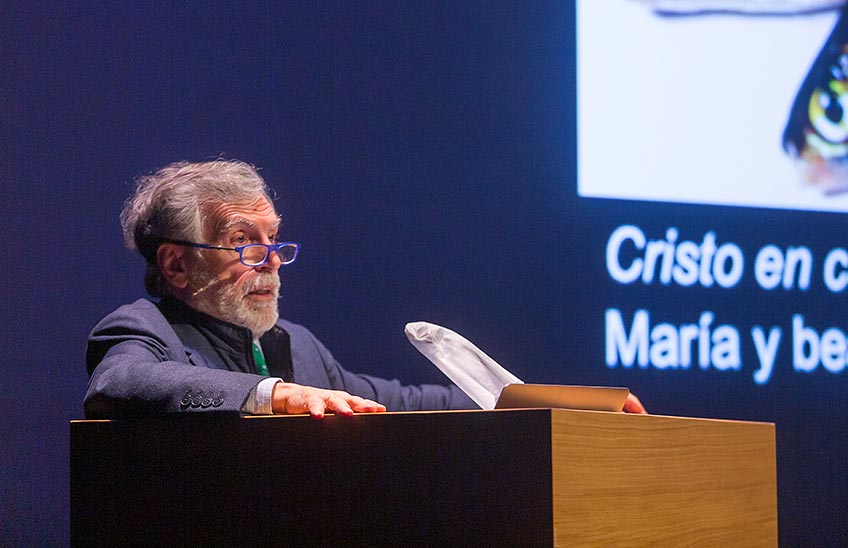
FotoManuelCastells/Fernando Marías in the theater of the Museo Universidad de Navarra, where the series organized by the Fundación Amigos del Museo del Prado with the School of Philosophy y Letras is taking place.
24 | 02 | 2021
Fernando Marías, Full Professor of Art History at the Universidad Autónoma de Madrid. Autonomous University of Madridthe third session of lecture series Francisco Calvo Serraller, which is organized by theFriends of the Prado Museum Foundation organized by the University of Navarraat partnership with the School Philosophy y Letras of the academic center.
At the beginning of his speech, Marías assured that "Velázquez was a master of deception as a visual illusion, from his still lifes with youthful figures, of tight Flemish description, to his last works of liberalbrushstrokes and to be seen from afar, because when we get closer we stop seeing objects to contemplate spots of color: art instead of realities". He also pointed out that "they were two very different ways of being a naturalistpainter , a term adopted in the 20th century from the literary theory of the 19th century, which testify to his passage from portrayable material reality to the capture of the phenomenon of vision". Thus, to support these statements, the expert began by showing the attendees the painting of Christ in the house of Martha and Mary, a painting done in Seville and dated at the beginning of the artist's degree program . "In these early works of still lifes with figures, Velázquez made an exaggerated attempt to portray the fish in a reliable way, with all its details, which lead us to think that we could touch them," he said.
To illustrate the painter's capacity for representation, Marías also showed works such as El aguador de Sevilla and explained that "Velázquez paints a specific pitcher, in specific physical conditions, demonstrating that to paint realistically -naturalistically-, a canvas is not just a matter of copying, but that to copy one must be aware of the physical phenomena and thus transform an object into a representation on the canvas. There is a total coherence between the physical image and its representation". In this sense, relying on La dama del abanico and Las hilanderas, Marías highlighted his ability to create the illusion of movement, at a time when the camera obscura began to be used and , therefore, "the imitation of painting had to improve reality": "Velázquez is the first in history to paint a spinning wheel in movementwith a stroboscopic effect, even the Flemish painters closest to naturalism painted them without movement. He had no precedent, except to look at its physical and visual effects".
On the other hand, he spoke of the importance that the artist gave to the vision of the eye and its physical behavior. Showing Las Meninas, he pointed out that in the work "there are things that are there but that we do not look at, elements that are not definitive, but that are part of the reality of my vision", such as the canvas represented, which occupies a large part of the image, but which is an element "that no one looks at excessively". He also highlighted his ability to provoke in the viewer the sensation of being able to touch the elements represented or to deduce phenomena as receptors of touch: in El aguador de Sevilla, for example, "we think that the water in the glass is cool", or in Vieja friendo huevos, "we can deduce that the oil is boiling": "Through some keys, he demands an extension of the sensations, because our mind is perceptive, because we are a body that contemplates with the elements of all the senses". For all these reasons, Marías concluded by affirming that "it is as if Velázquez had anticipated the poet Goethe with his brush when he said that "I see with eyes that feel, I feel with a hand that sees...". ".
Full Professor D. in Art History from the Universidad Complutense, Fernando Marías has been teaching at teaching at the Universidad Autónoma de Madrid since 1976. Since 1993, he has been a specialist in the history of Spanish architecture and art from the 15th and 17th centuries, with special attention to artists such as El Greco and Velázquez. Author of more than 300 publications and articles on research in these fields, he has curated numerous exhibitions, including: "Carlos V. Arms and Letters"; "El Greco: The Apostles. Saints and madmen of God"; and "The Greek of Toledo". He is a member of the committee Scientific Committee of the Centro Internazionale di Studi di Architettura Andrea Palladio in Vicenza and publisher of its journal Annali di architettura. He is also a corresponding member of the Royal Academy of Fine Arts and Historical Sciences of Toledo and an elected member of the Royal Academy of History.


